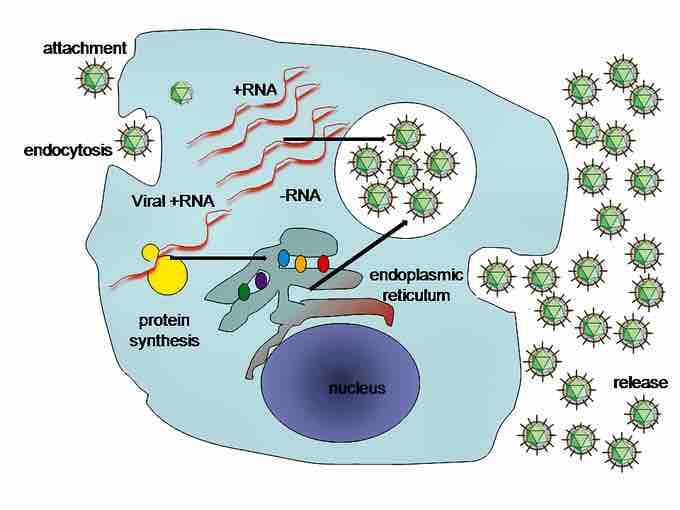Viral populations do not grow through cell division, because they are acellular. Instead, they use the machinery and metabolism of a host cell to produce multiple copies of themselves, and they assemble in the cell. The life cycle of viruses differs greatly between species, but they all share the same basic life cycle stages .

A typical virus replication cycle
There are six basic stages in the life cycle of viruses: attachment, penetration, uncoating, replication, assembly of viral particles, and release.
Attachment is a specific binding between viral capsid proteins and specific receptors on the host cellular surface. This specificity determines the host range of a virus. For example, HIV infects a limited range of human leukocytes. This is because its surface protein, gp120, specifically interacts with the CD4 molecule, a chemokine receptor, which is most commonly found on the surface of CD4+ T-Cells. This mechanism has evolved to favor those viruses that infect only cells in which they are capable of replication. Attachment to the receptor can induce the viral envelope protein to undergo changes that results in the fusion of viral and cellular membranes, or changes of non-enveloped virus surface proteins that allow the virus to enter.
Penetration follows attachment: Virions enter the host cell through receptor-mediated endocytosis or membrane fusion. This is often called "viral entry. " The infection of plant and fungal cells is different from that of animal cells. Plants have a rigid cell wall made of cellulose, and fungi one of chitin, so most viruses can get inside these cells only after trauma to the cell wall. However, nearly all plant viruses (such as tobacco mosaic virus) can also move directly from cell to cell, in the form of single-stranded nucleoprotein complexes, through pores called "plasmodesmata". Bacteria, such as plants, have strong cell walls that a virus must breach to infect the cell. However, given that bacterial cell walls are less thick than plant cell walls due to their much smaller size, some viruses have evolved mechanisms that inject their genome into the bacterial cell across the cell wall, while the viral capsid remains outside